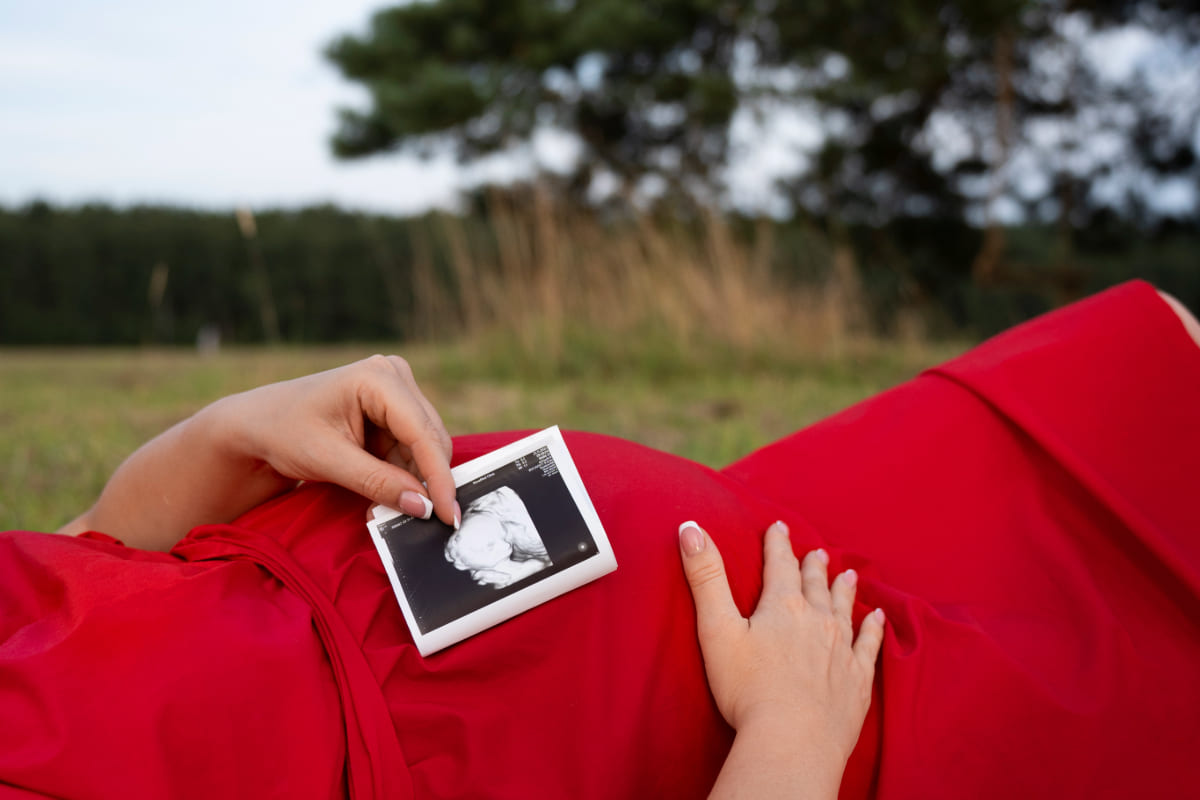Ah, the second trimester. That sweet middle stretch of pregnancy where you’re (hopefully) past the nausea, but not yet waddling like a penguin. Somewhere between weeks 13 and 28, a lot shifts—physically, emotionally, hormonally. Your bump’s starting to make a real appearance, strangers might smile knowingly at the grocery store, and suddenly, food actually sounds… edible again.
It’s also prime time to embrace movement. And I don’t mean chasing after dropped snacks or repositioning ten pillows every night. I mean intentional, feel-good, energizing movement. But before we dive into the how, let’s talk about the what—as in, what’s happening inside and out during this middle trimester.
Second Trimester: The Plot Thickens

Let’s get real: The first trimester often feels like one big survival mode. But the second? It’s a bit of a turning point. Here’s what’s typically going on:
The Bump Shows Up – Say goodbye to the “Is she or isn’t she?” phase. Your uterus is rising (literally), and stretchy pants are officially a must.
Return of Energy Levels (kind of) You may discover that you have a little extra energy. Less couch potato, more “let’s take a walk.”
Aches and Growing Pains – Ligaments stretch, your center of gravity shifts, and suddenly getting out of bed requires strategy. It’s wild.
Baby’s Busy, Too – By the end of this trimester, your little one will be kicking, stretching, and possibly even sucking their thumb.
You’re growing a human. It’s kind of a big deal. But here’s the thing: moving your body—smartly and gently—can help you feel a whole lot better during all this change.
Exercise in the Middle Months: Why Bother?

Let’s start with this: If your pregnancy’s uncomplicated and your healthcare provider gives the green light, exercise during the second trimester is not only safe—it’s encouraged.
Why?
Because it helps with just about everything: energy, sleep, mood, posture, digestion. It can reduce back pain, support your joints, and even prep your body for labor. Plus, those post-workout endorphins? Pure gold.
However, this isn’t about hitting PRs or bikini boot camps. The second trimester is all about moving in ways that feel good and support what your body is already doing—which is a lot.
Tips for Moving Safely (and Sanely) in Trimester Two
Alright, let’s break it down. Here’s how to maintain an active lifestyle without going overboard:
1. Think Gentle Strength Over Intensity
This isn’t the time to start training for a marathon (unless you’re Serena Williams—then maybe). Focus on maintaining strength, especially in your core, glutes, and back. Resistance bands, bodyweight moves, light dumbbells—they’re all your friends.
A few go-to moves:
- Squats (with or without support)
- Wall push-ups
- Bird-dog (great for core stability)
- Seated rows with a band
2. Walking Is Underrated—Truly
A few times a week, a 20–30 minute stroll can make a big difference. It’s easy on your joints, boosts circulation, and clears your head. Turn on your preferred playlist or a podcast, then go.
3. Chef’s Kiss: Prenatal Pilates or Yoga
These are a dream in the second trimester. They focus on flexibility, breathwork, and gentle core work—plus they give you that lovely “ahhh” feeling at the end of class.
If you can’t get to a studio, no worries—there are tons of reputable prenatal classes online (just make sure they’re legit and pregnancy-specific).
4. Stay Cool & Hydrated
Your body’s already running warmer thanks to increased blood volume and baby’s cozy setup. So keep water nearby, avoid overheating, and skip super hot environments (sorry, hot yoga).
5. Balance Is… Wobbly
That growing bump can throw your balance off, so skip anything that involves weird angles or standing on one leg without support. Be kind to those shifting hips and stay grounded.
Listen to Your Body (Like, Actually Listen)
The “no pain, no gain” mentality is not appropriate at this moment.If something feels off, stop. Period. You are now moving for two people, not just yourself. The following are some indicators to watch out for:
- Dizziness or feeling faint
- Vaginal bleeding or leaking fluid
- Shortness of breath before exercise
- Chest pain or unusual swelling
- Contractions (yep, even early ones)
Never assume if you’re unsure; instead, consult your midwife or doctor.
A Quick Note on Core Work
Diastasis recti, the separation of the abdominal muscles that occurs in many pregnancies, is undoubtedly something you’ve heard about.The second trimester is when core exercises should start shifting.
Skip anything that domes your belly or involves crunching. Think gentle engagement: lifting through the pelvic floor, breathing into the ribs, engaging the deep abs without strain. If you’re not sure how to do that, a prenatal fitness specialist or physical therapist can help a lot.
Your Body, Your Pace, Your Journey
You see, each pregnancy is a unique, strange, and unpredictable journey.What feels amazing for one person might feel awful for another. Some days you’ll feel up for movement. Other days, lifting a laundry basket will feel like an Olympic feat.
It’s all normal.
Just aim for consistency over intensity. Move not because you’re “supposed” to, but because it makes you feel more like yourself. What happens if you are absent for a few days or weeks? That’s okay too.
Final Thoughts: Don’t Overthink It
The second trimester is this golden little window—before third-trimester fatigue and belly bulk really set in—where exercise can feel pretty good, and even enjoyable So, if you can, take advantage of it. Dance in the kitchen. Do some light stretching in bed. Walk around the block. Move in ways that support your body today.
You’ve got a lot going on inside, and a lot more ahead. A little movement now goes a long way in making the road ahead feel a little smoother.
FAQs
The second trimester sweet spot refers to the period between weeks 14–27 of pregnancy when many women feel more energized and experience fewer symptoms.
Morning sickness usually fades, energy levels return, and the risk of miscarriage drops—making it a physically and emotionally easier time.
Gentle activities like walking, prenatal yoga, swimming, and modified strength training can help you stay active during the second trimester sweet spot.
Yes, avoid exercises that involve lying flat on your back for long, contact sports, or anything that risks abdominal injury or balance loss.


